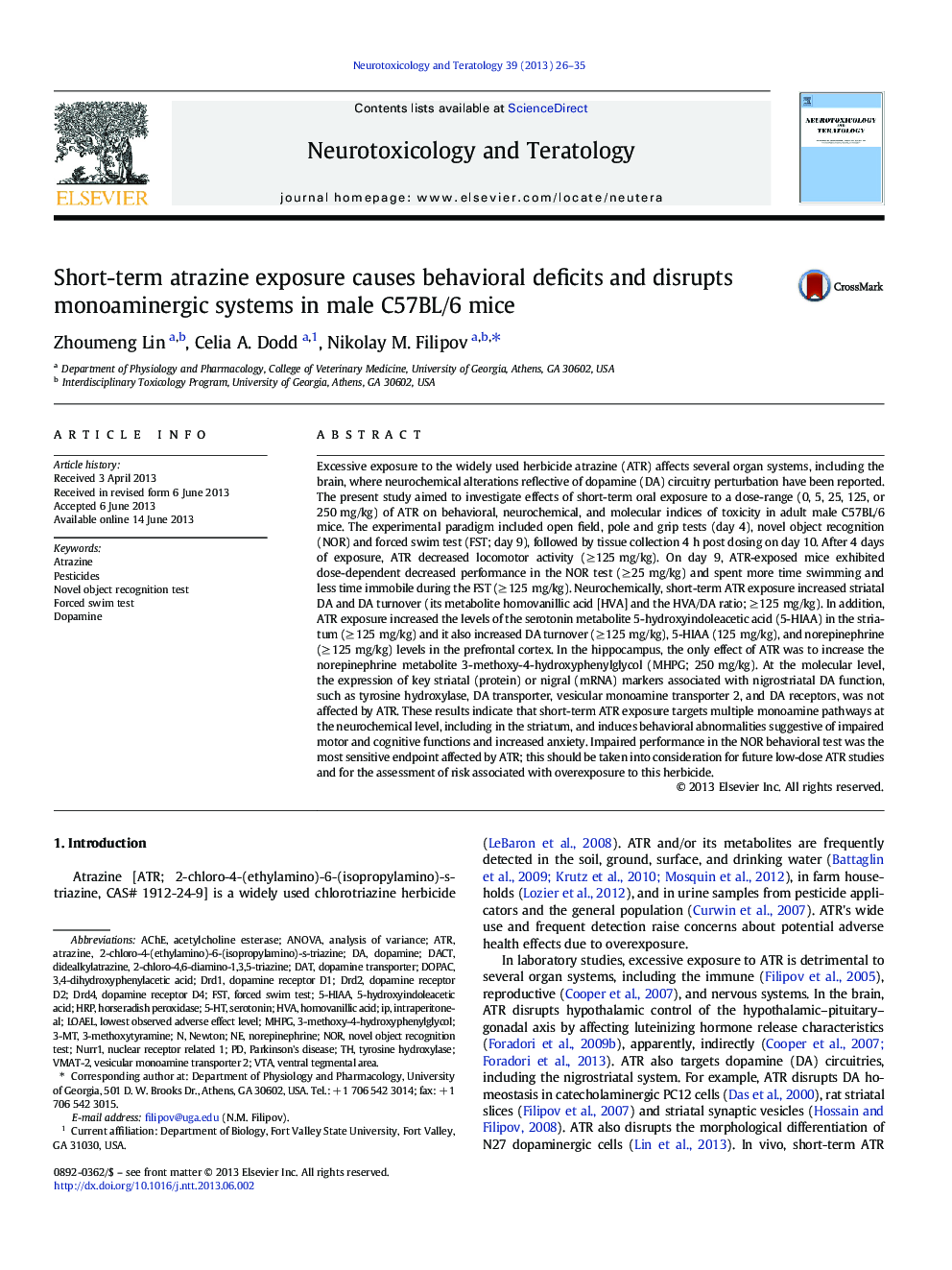| کد مقاله | کد نشریه | سال انتشار | مقاله انگلیسی | نسخه تمام متن |
|---|---|---|---|---|
| 2591087 | 1562096 | 2013 | 10 صفحه PDF | دانلود رایگان |

• Short-term oral exposure to atrazine caused behavioral deficits in adult male mice.
• Atrazine exposure altered striatal, prefrontocortical, and hippocampal monoamines.
• Atrazine's effects were dose-dependent.
• Performance in a novel object recognition test (NOR) was most sensitive to atrazine.
Excessive exposure to the widely used herbicide atrazine (ATR) affects several organ systems, including the brain, where neurochemical alterations reflective of dopamine (DA) circuitry perturbation have been reported. The present study aimed to investigate effects of short-term oral exposure to a dose-range (0, 5, 25, 125, or 250 mg/kg) of ATR on behavioral, neurochemical, and molecular indices of toxicity in adult male C57BL/6 mice. The experimental paradigm included open field, pole and grip tests (day 4), novel object recognition (NOR) and forced swim test (FST; day 9), followed by tissue collection 4 h post dosing on day 10. After 4 days of exposure, ATR decreased locomotor activity (≥ 125 mg/kg). On day 9, ATR-exposed mice exhibited dose-dependent decreased performance in the NOR test (≥ 25 mg/kg) and spent more time swimming and less time immobile during the FST (≥ 125 mg/kg). Neurochemically, short-term ATR exposure increased striatal DA and DA turnover (its metabolite homovanillic acid [HVA] and the HVA/DA ratio; ≥ 125 mg/kg). In addition, ATR exposure increased the levels of the serotonin metabolite 5-hydroxyindoleacetic acid (5-HIAA) in the striatum (≥ 125 mg/kg) and it also increased DA turnover (≥ 125 mg/kg), 5-HIAA (125 mg/kg), and norepinephrine (≥ 125 mg/kg) levels in the prefrontal cortex. In the hippocampus, the only effect of ATR was to increase the norepinephrine metabolite 3-methoxy-4-hydroxyphenylglycol (MHPG; 250 mg/kg). At the molecular level, the expression of key striatal (protein) or nigral (mRNA) markers associated with nigrostriatal DA function, such as tyrosine hydroxylase, DA transporter, vesicular monoamine transporter 2, and DA receptors, was not affected by ATR. These results indicate that short-term ATR exposure targets multiple monoamine pathways at the neurochemical level, including in the striatum, and induces behavioral abnormalities suggestive of impaired motor and cognitive functions and increased anxiety. Impaired performance in the NOR behavioral test was the most sensitive endpoint affected by ATR; this should be taken into consideration for future low-dose ATR studies and for the assessment of risk associated with overexposure to this herbicide.
Journal: Neurotoxicology and Teratology - Volume 39, September–October 2013, Pages 26–35